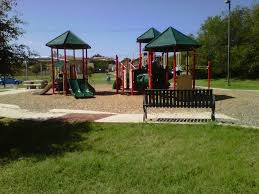

When you’re not out walking, remember our motto: Every park needs a friend. The fresh air is gentle exercise that clears the mind and strengthens your
#COMANCHE LOOKOUT PARK TV#
Whether you meet with us or not, we encourage you to sociallyĭistance yourself from your job, the grocery store, and the TV by taking a leisurely To the membership via email, with details posted here on the Friends website ( Unitl the, you can also get it touch via email, at Topics requiring discussion will be presented Late September or early October, so we may resume meetings in November The City anticipates re-opening Libraries in Meetings have been suspended since COVID-19 quarantine measure were Many organizations are reducing or eliminating

Pandemic we’re trying hard to adopt the new “social distancing” measures Remember, Keep it Clean! If you hauled it in then haul it back out (and take a little extra with you).Most of San Antonio is concerned about the coronavirus Please remember to stay safe and obey the park rules. Does the exposed layer of substrate appear to have more characteristics in common with the Edwards Plateau or the Blackland Prairie?ģ.What is the net gain in elevation between the parking lot and the provided coordinates of the exposed layer? Include the color and texture of the layer.Ģ. Describe the appearance of the exposed layer of earth at the given coordinates. To log this EarthCache, E-mail me the answers to the following question:ġ. This has led to most of the Blackland Prairie ecosystem being converted to crop production or tame pasture grasses, leaving less than one percent of the native tallgrass remaining and making it the most endangered large ecosystem in North America.

Because of the soil and climate, this eco-region is ideally suited to crop agriculture. The region is underlain by Upper Cretaceous marine chalks, limestone, and shale which give rise to the development of the characteristic black, heavy clay soils. The Blackland Prairie runs from just south of the Red River on the Texas-Oklahoma border through the Dallas-Fort Worth metropolitan area and into the San Antonio area and covers more than 19,400 square miles. It is this limestone that hold the water found in the Edwards Aquifer. It is very porous and often has the appearance of a gray sponge. You have probably seen examples of it all over the Hill Country. Erosion has left most of the region with very shallow soils of less than 10 inches. Most of the Edwards Plateau contains mottled (speckled) white to yellowish clay to clay loam surface soil which quickly turns into rocky clay or solid limestone rock layers beneath the surface. Vegetation is primarily a mixed low woodland dominated by Live Oak. It includes a vast range of plant and animal life and is considered one of the most biologically diverse regions in the nation. It is bordered by the Chihuahuan Desert to the west and the Great Plains to the north. There, you will find a shaded children’s playground and a Library Loop Trail that joins the Comanche Loop Trail, leading to the tower. The Edwards Plateau is commonly referred to as the “Texas Hill Country” and covers approximately 36,680 square miles. Comanche Lookout Park’s official address is 15551 Nacogdoches Road, but I recommend that you park at the Julia Yates Semmes Library at 15060 Judson Road. But don’t worry, this fault zone is not active today, and Bexar County is considered one of the lowest-risk zones for earthquakes in the United States. The escarpment, or hill, making up the bulk of Comanche Lookout Park was created about 15 million years ago during the Miocene epoch and was caused by the uplifting of the Edwards Plateau and the subsidence of the Gulf Costal Plain during an earthquake. This escarpment, or ridge of rock, straddles the southeastern edge of the Edwards Plateau and the western edge of the Blackland Prairie. Comanche Lookout Park is a 96-acre public park owned by the City of San Antonio and is the fourth highest natural point in Bexar County with an elevation of 1,340 feet.


 0 kommentar(er)
0 kommentar(er)
